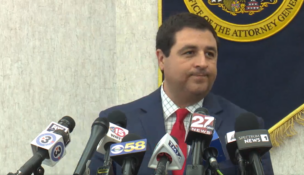Secondary Liability Case Analysis
By: dmc-admin//January 8, 2003//
Given the plain language of the statute, as well as the legislative history, the court could not have reached any other decision than it did. Nevertheless, the court squandered a valuable opportunity to discuss the incongruence of sec. 81.17 with modern tort law.
The precursor statutes to sec. 81.17 were created as an exception to the general rule of total governmental immunity for torts.
Torts such as the one in this case were deemed a unique sort of tort for which municipalities should not have complete immunity.
After Holytz, the legislature codified the abrogation of governmental immunity for torts in sec. 893.80, but capped the amount of liability.
However, the legislature did not repeal sec. 81.17. The result is that what were once considered unique torts – because the usual rule of governmental immunity was abrogated – became unique in the opposite way – the municipality had a heightened form of protection from liability, rather than less.
Presumably, the legislature intended no such thing. Nevertheless, the legislature has since amended sec. 81.15, a statute related to sec. 81.17, and specifically referenced sec. 893.80, the statute abrogating immunity, in doing so.
Therefore, applying the general rule of statutory construction that the legislature is presumed to understand the consequences of its actions, the court had no alternative but to presume the legislature knew what it was doing – even though it apparently did not.
In the wake of this decision, it is not merely risky for plaintiffs to enter Pierringer releases with private contractors, as the court stated, but foolhardy, because it is questionable whether a plaintiff, having settled with the private contractor, can ever obtain a judgment against the municipality.
Section 81.17 provides in part that whenever damages are "caused by" the negligence of both a municipality and a private party, the municipality is only secondarily liable. However, depending on the jury’s apportionment of damages, the private party could be found to have caused the injuries, but not enough to be "liable."
Suppose that the plaintiff is found 2 percent contributorily negligent, the private contractor 1 percent, and the municipality 97 percent. The municipality would possibly still be only secondarily liable, even though the contractor would have been found not liable at all under comparative negligence principles, because the contractor would still have "caused" the injuries, invoking application of the statute.
Should this interpretation be correct, the only way a plaintiff, who has entered into a Pierringer release with a private contractor, could recover from the municipality is if the jury found at trial that the private contractor was 0 percent causally negligent.
However, the doctrine of judicial estoppel arguably would bar the plaintiff from making that argument to the jury. The plaintiff at that point would have filed a complaint, alleging negligence on the part of the private contractor, and accepted a settlement from that party as a result.
It is not clear whether judicial estoppel would apply in light of the Wisconsin Supreme Court’s discussion of the doctrine in State v. Petty, 201 Wis.2d 337, 548 N.W.2d 817 (1996).
The court cited with approval a case holding that the doctrine is limited to instances where a party has earlier obtained a judicial determination that is contrary to its new position – "sold one [position] to the court," and then "repudiate[s] it in order to have a second victory."
| |
||
| |
||
However, the court also cited with approval cases that suggest a judicial determination is not required for the doctrine to apply, but only that a party has "gained an advantage" by a position or "
succeed[ed] in maintaining that position," and then, "simply because his interests have changed, assume[s] a contrary position." Petty, 201 Wis.2d at 351.
Arguing to a jury that the private contractor is 0 percent causally negligent after accepting a settlement from that party would fit comfortably into the latter interpretation, but not the former.
Furthermore, even if the contractor must be found more causally negligent than the plaintiff for sec. 81.17 to apply, as happened in the case at bar, the plaintiff is nevertheless placed in the position of arguing that the contractor is less negligent than the plaintiff himself. Even then, the doctrine of judicial estoppel would arguably bar such an argument.
Regardless of how these issues would ultimately be decided, the risks for a plaintiff entering into a Pierringer release with a contractor are sufficiently great that the decision in this case should be considered not merely to "stifle" them, but to foreclose them altogether.
– David Ziemer
Click here for Main Story.
David Ziemer can be reached by email.
Legal News
- The Latest: Supreme Court arguments conclude in Trump immunity case
- Net neutrality restored as FCC votes to regulate internet providers
- Wisconsin Attorney General asks Congress to expand reproductive health services
- Attorney General Kaul releases update at three-year anniversary of clergy and faith leader abuse initiative
- State Bar leaders remain deeply divided over special purpose trust
- Former Wisconsin college chancellor fired over porn career is fighting to keep his faculty post
- Pecker says he pledged to be Trump campaign’s ‘eyes and ears’ during 2016 race
- A conservative quest to limit diversity programs gains momentum in states
- Wisconsin prison inmate pleads not guilty to killing cellmate
- Waukesha man sentenced to 30 years for Sex Trafficking
- 12-year-old shot in Milwaukee Wednesday with ‘serious injuries’
- Milwaukee man convicted of laundering proceeds of business email compromise fraud schemes
WLJ People
- Power 30 Personal Injury Attorneys – Russell Nicolet
- Power 30 Personal Injury Attorneys – Benjamin Nicolet
- Power 30 Personal Injury Attorneys – Dustin T. Woehl
- Power 30 Personal Injury Attorneys – Katherine Metzger
- Power 30 Personal Injury Attorneys – Joseph Ryan
- Power 30 Personal Injury Attorneys – James M. Ryan
- Power 30 Personal Injury Attorneys – Dana Wachs
- Power 30 Personal Injury Attorneys – Mark L. Thomsen
- Power 30 Personal Injury Attorneys – Matthew Lein
- Power 30 Personal Injury Attorneys – Jeffrey A. Pitman
- Power 30 Personal Injury Attorneys – William Pemberton
- Power 30 Personal Injury Attorneys – Howard S. Sicula











